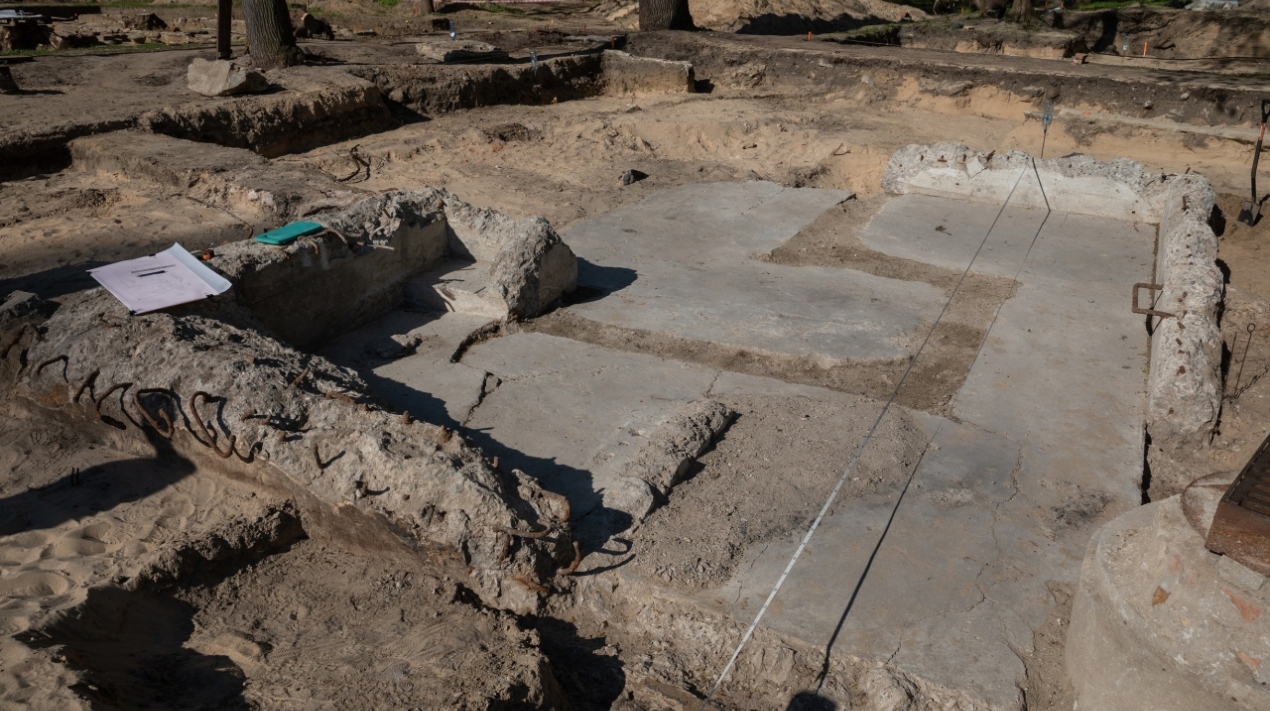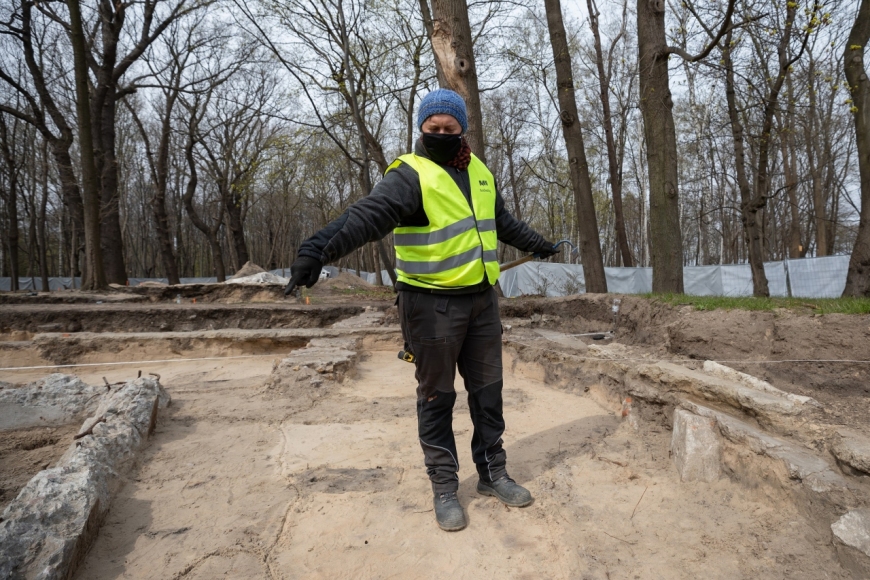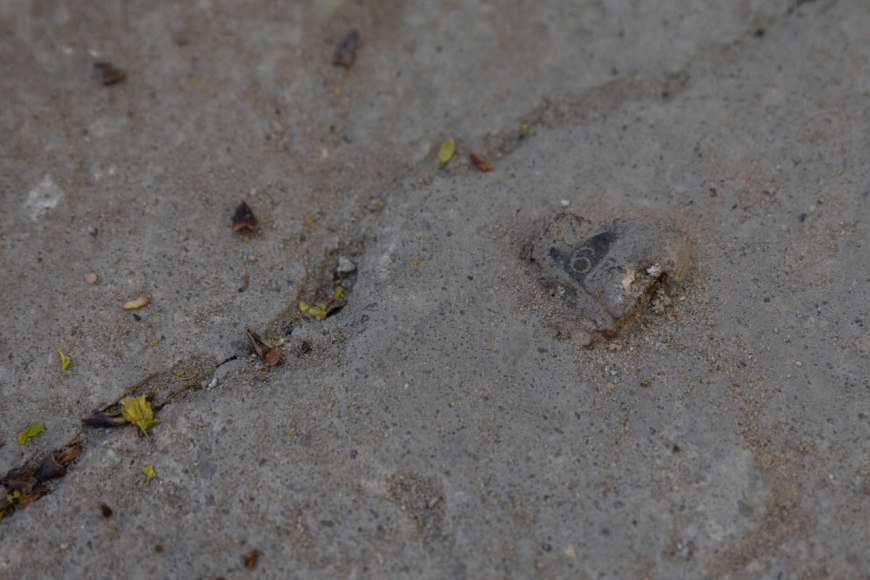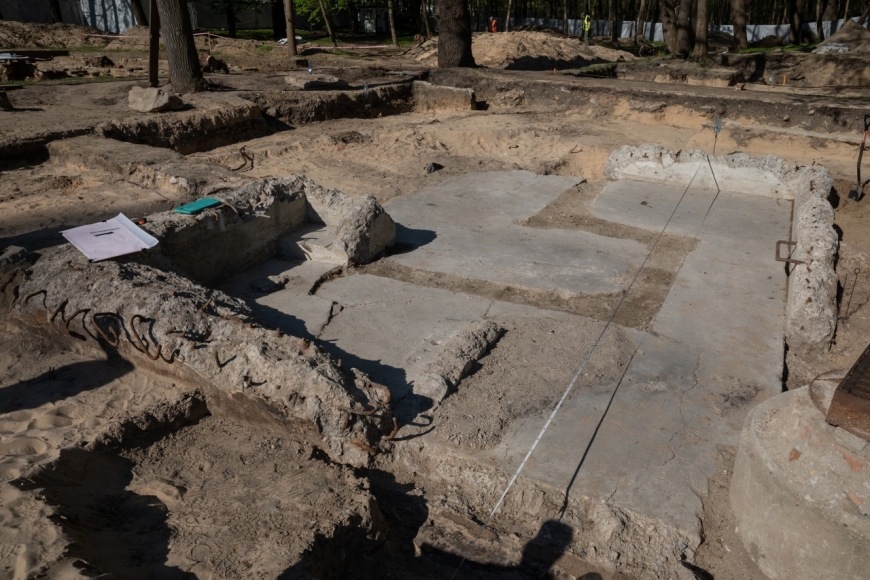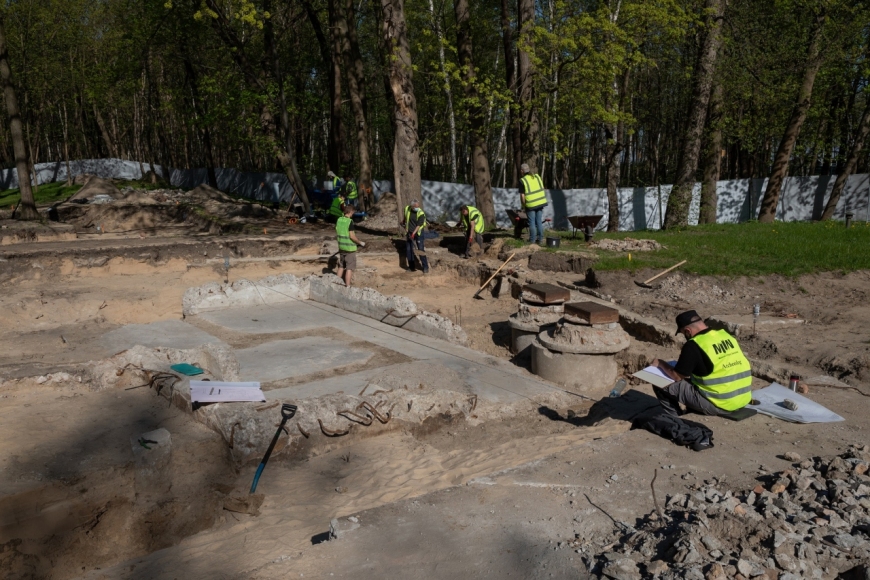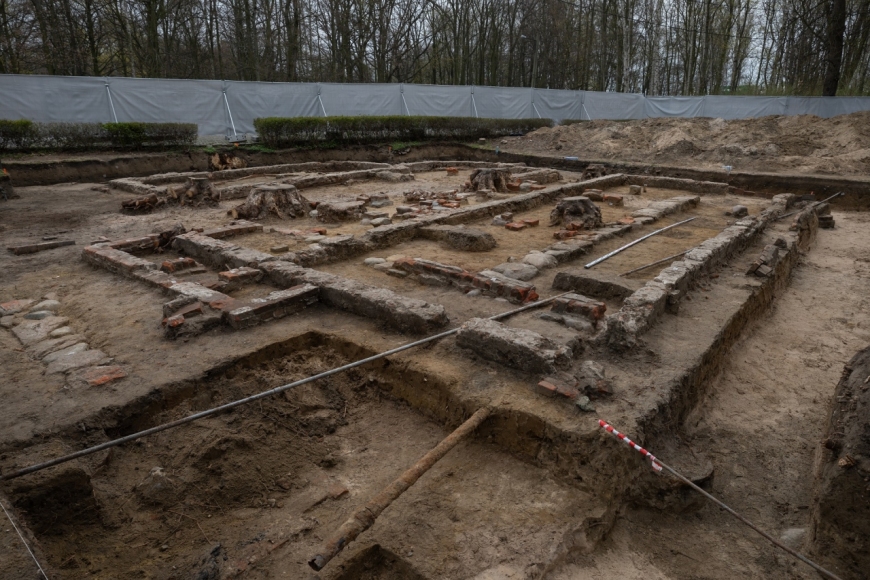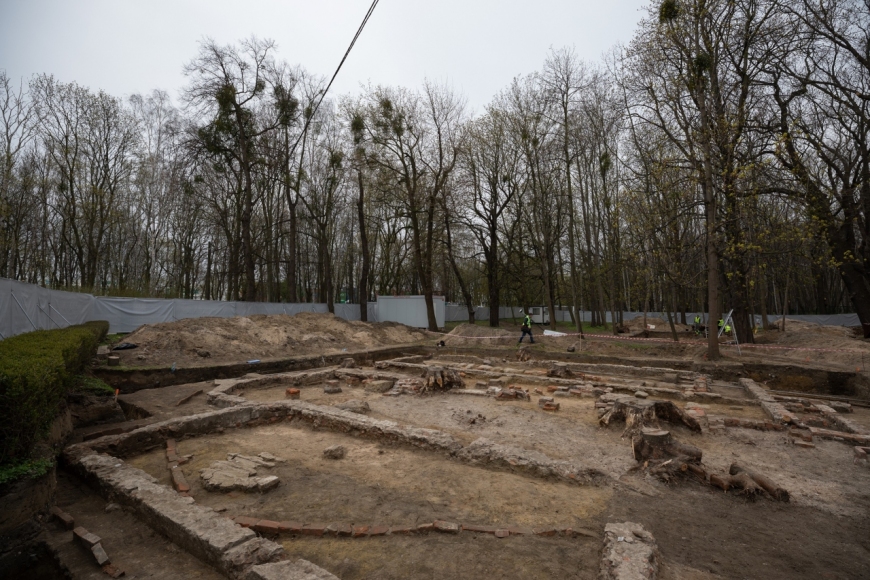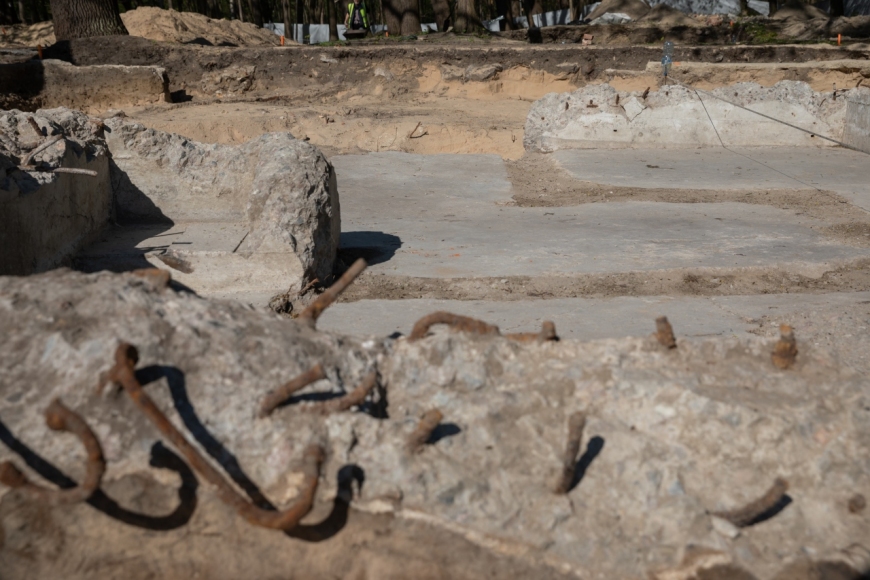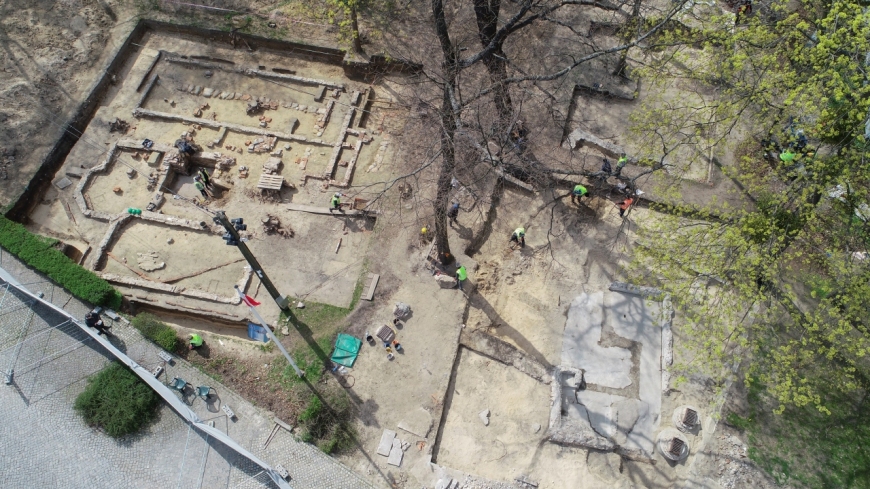Relics from Guardhouse No. 5 uncovered!
Archaeologists from the Museum of the Second World War in Gdańsk, during a two-month-long archaeological excavation, have unveiled relics from the guardhouse number 5. The exact location and condition of this building, very important to the history of the Military Transit Depot and the heroic defense of Westerplatte in September 1939, have not until today’s finds been certain.
The researchers have managed to uncover the remains of the basement walls and its floors, and have also found a number of priceless artifacts related to the service of the Polish soldiers who stayed here as well as their heroic fight in September 1939. The most valuable of the discovered items will find a place at the exhibition of the Museum of Westerplatte and the War of 1939, which is under construction.
Worth noting is that in March this year the seventh stage of the archaeological research began at the former Military Transit Depot at Westerplatte. The team of archaeologists from the Museum of the Second World War in Gdańsk have been carrying out archaeological work in the area of the military cemetery of the Polish Army Soldiers on Westerplatte, a project which includes verification of relics uncovered from guardhouse No. 5 and the officers' mess building – which was also the location of the quarters of the depot commander, Major Henryk Sucharski and his deputy, Captain Franciszek Dąbrowski.
More information about the 7th stage of archaeological research and this year's work related to the construction of the Museum of Westerplatte and the War of 1939 can be found HERE.
As the director of the Museum of the Second World War in Gdańsk, Dr. Karol Nawrocki, states:
- The Gdańsk military cemetery of the Polish Army Soldiers in Westerplatte, built by the Museum of the Second World War, will be a place which, in fact, is not only symbolic - as has been the case so far, but also where the remains of the fallen defenders will be buried. It will also be a space where the relics of historic buildings will be displayed: the officers' mess, and above all, guardhouse No. 5 - a silent witness to the most dramatic events related to the defense of the Polish outpost on Westerplatte. By finding the remains of the Polish soldiers, and uncovering the remains of historical objects or discovering objects that have been in the ground for over 80 years, in remembrance of September 1939, we pay due honor and restore the dignity to those who, fighting for a free Poland, suffered the greatest sacrifice.
The location of the excavations was not chosen by chance - adds Filip Kuczma, head of the Archaeological Department of the Museum of the Second World War in Gdańsk:
- The ongoing archaeological work is research that precedes the construction of a new military cemetery of the Polish Army Soldiers on Westerplatte, which will be located where the graves of Polish soldiers were found in 2019. The location of the officers' mess was determined during the first stage of the archaeological research, however, the exact location and condition of Guardhouse No. 5, a building very important to the history of the depot and the heroic defense of Westerplatte in September 1939, has not until now been certain. This research will allow the determination of the exact location of the building as well as the degree of its preservation. We have taken into account the possibility of finding the remains of the Polish defenders as well as elements of their military equipment and uniforms.
Guardhouse No. 5 on Westerplatte was built in 1933-1934 and was part of the new defense system of the Military Transit Depot. By 1936, a total of six guardhouses had been built, which significantly strengthened the defense capabilities of the Polish unit stationed on the peninsula. During the heroic seven-day defense, on September 2, 1939, there was a devastating Luftwaffe raid on Westerplatte. German bombs damaged a number of buildings, but most importantly, they led to the destruction of guardhouse No. 5 and the death of at least six Polish soldiers inside. After the end of the fighting for the Military Transit Depot, many buildings used by the Polish guard unit were demolished. The demolition works were carried out by German-supervised Polish civilian prisoners of war - mainly inhabitants from Gdańsk and Gdynia, arrested in the first days of September 1939. Using hand tools, they broke down the reinforced concrete walls of guardhouse no. 5. In 1945, a symbolic grave was placed on the site of the destroyed guardhouse, and later a cemetery to commemorate the fallen Polish heroes was built.












